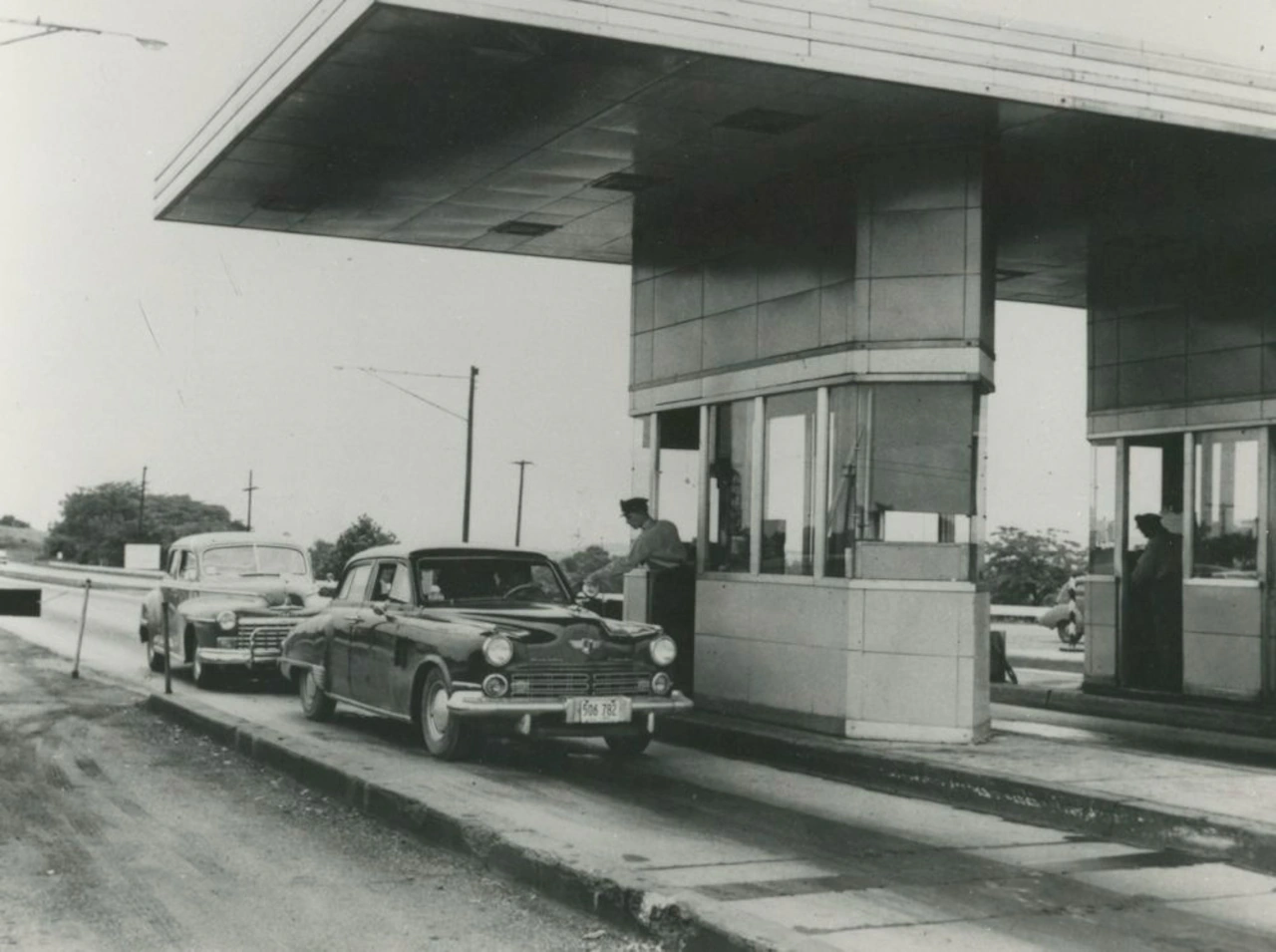
In 1940, drivers lined up for hours to be the first to drive on the Pennsylvania Turnpike, which opened at midnight on Oct. 1, 1940.
Journalists at the time called the Turnpike a “dream highway” and “super highway,” according to an article by Curtis Miner, senior history curator at The State Museum of Pennsylvania.
The toll at the time was one penny a mile.
The original section of the Turnpike covered 160 miles from Irwin in Westmoreland County to Carlisle in Cumberland County. Today the Turnpike extends to 565 miles.
According to the Turnpike Commission, more than 500,000 people use the roadway daily.
Governor George Earle signed the Pennsylvania Turnpike Commission into law in July 1937.
The following year, the Roosevelt administration agreed to finance the project to create a four-lane highway over the abandoned South Penn railroad route.
It took only 23 months from start to finish to get the first section of the Turnpike opened to traffic.
“The PA Turnpike has been a transportation leader since our opening day. Eight and a half decades later we are still in growth mode, continuing to deliver ‘best in class’ operations that reinforce our mission of providing a safe, reliable, customer-valued toll road system that supports national mobility and commerce,” said Mark Compton, PA Turnpike CEO, in a news release.
In the past 10 years, the Turnpike said it has rebuilt 164 miles of roadway through its total reconstruction program, while adding 13 miles with the Southern Beltway and working to construct approximately 14 miles on the Mon/Fayette Expressway. New interchanges, including Interstate 95, State Route 29 and State Route 903, were added to improve access.
This year, the Turnpike is converting to Open Road Tolling to provide “seamless, nonstop travel. Overhead gantries – equipped with technology that permits drivers to pass at highway speeds without slowing down or stopping – span the road. Coupled with E-ZPass, launched at the turn of the millennium and now responsible for 85% of toll transactions, the PA Turnpike continues to keep customer convenience at the forefront.”
Turnpike engineers also were responsible for the invention of the Sonic Nap Alert Pattern rumble strips that are now used nationwide. The Turnpike is working on bringing online a 500-mile Fiber Optic Broadband Network.
“The PA Turnpike is dedicated to safely improving and maintaining our roadway for all who ride and work on it,” said Craig Shuey, PA Turnpike chief operating officer, in a news release. “Mixing modern and established techniques to preserve our historic roadway creates the best ride possible while preparing for future needs.
“We take immense pride in maintaining the PA Turnpike and setting the pace for industry innovation. I’m confident we’ll continue to be a trendsetter for decades to come.”
The Turnpike said it has a goal “of becoming America’s First Sustainable Superhighway in 2040 – just in time for our centennial celebration.
“Already, the Commission is building microgrids for energy independence and examining pilot projects for in-road, inductive wireless charging. It manages environmental challenges, such as stormwater runoff, with its Stormwater Asset Management Program and Municipal Separate Storm Sewer Systems programs.



